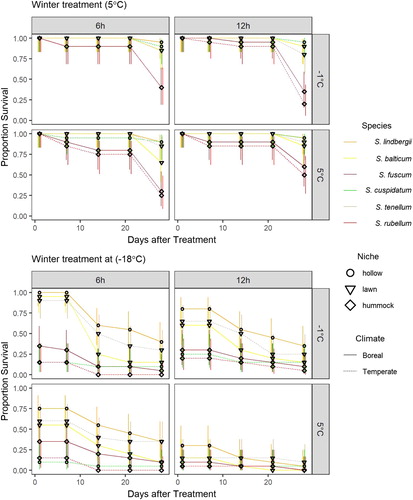Figures & data
Table 1. Summaries of biogeographic element, continental-oceanic affinity (Hill et al. Citation2007) and centre of microtopographic position (Flatberg Citation2013) for Sphagnum species used in the experiments. Which experiment it is used in and the materials origin is also given: Kulflyten (K), Ryggmossen (Ry), Römossen (Rö) and Wildmoor (W).
Table 2. Summary of the experimental design. Hardening treatments are designed to test different ways in which freezing tolerance can be induced. Winter treatments are different winter conditions.
Figure 1. Experiment 2: Maximal PSII efficiency (Fv/Fm) during the acquisition of frost tolerance in Sphagnum. Points are means with standard errors of Fv/Fm from the results of all species.
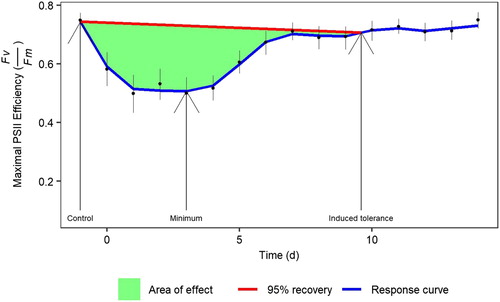
Figure 2. Hourly temperature readings of the loggers at the highest and lowest mean heights above the water table at Kulflyten (A) and Ryggmossen (B). Daily temperature extrema, means and standard errors for July (C) and December (D) at Kulflyten and Ryggmossen per logger.
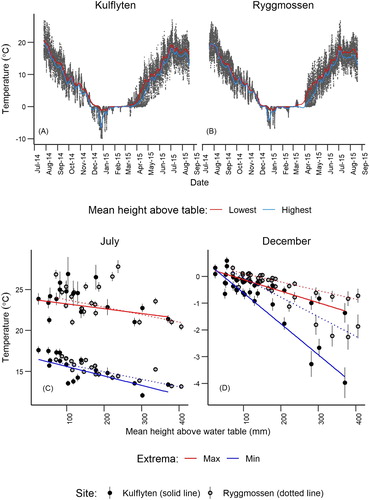
Figure 3. Experiment 1: Effect of duration and degree of freezing on the maximal PSII efficiency (Fv/Fm) of unhardened shoots of Sphagnum. Points are means with standard errors.

Figure 4. Experiment 1: Effect of duration and degree of freezing on the growth rate (mm d−1) of unhardened shoots of Sphagnum. Points are means with standard errors.
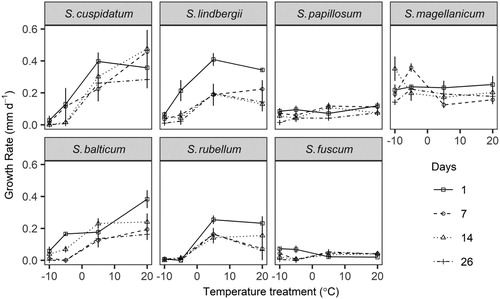
Figure 5. Experiment 2: Acquisition of frost tolerance in Sphagnum by low night temperature. Radius of the circle is proportional to the area of effect, which is an integrated measure of effect and time to quantify a samples ability to return to 95% of the pre-treatment Fv/Fm value (cf. ).

Figure 6. Experiment 3: Effects of hardening and winter treatments on the maximal PSII efficiency (Fv/Fm) in Sphagnum. The hardening treatments were factorial combinations of day length (6 or 12 h) and night temperature (−1 or 5°C). Winter temperature treatments comprised 5, −5, −10 and −18°C. Sphagnum treatment temperatures were maintained for 48 h. Points are means with standard errors.
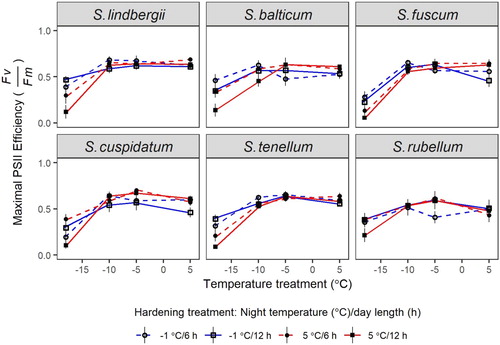
Figure 7. Experiment 3: Effects of hardening and winter treatments on Sphagnum survival. The hardening treatments were factorial combinations of day length (6 or 12 h) and night temperature (−1 or 5°C). Winter temperature treatments shown are for 5 and −18°C. Individual stems were assessed for death at 1, 7, 14, 21 and 28 d after treatment. Points are the proportion of living shoots, error bars are 95% confidence interval.
